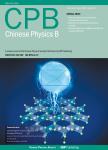Using harmonic beam combining to generate pulse-burst in nonlinear optical laser
Using harmonic beam combining to generate pulse-burst in nonlinear optical laser作者机构:Technical Institute of Physics and ChemistryChinese Academy of SciencesBeijing 100190China University of Chinese Academy of SciencesBeijing 100049China
出 版 物:《Chinese Physics B》 (中国物理B(英文版))
年 卷 期:2024年第33卷第1期
页 面:422-427页
核心收录:
学科分类:080901[工学-物理电子学] 070207[理学-光学] 0809[工学-电子科学与技术(可授工学、理学学位)] 07[理学] 08[工学] 080401[工学-精密仪器及机械] 0804[工学-仪器科学与技术] 0803[工学-光学工程] 0702[理学-物理学]
主 题:pulse-burst beam combining nonlinear optics
摘 要:The ultrashort lasers working in pulse-burst mode reveal great machining performance in recent years. The number of pulses in bursts effects greatly on the removal rate and roughness. To generate a more equal amplitude of pulses in burst with linear polarization output and time gap adjustable, we propose a new method by the harmonic beam combining(HBC).The beam combining is commonly used in adding pulses into the output beam while maintaining the pulse waveform and beam quality. In the HBC, dichroic mirrors are used to combine laser pulses of fundamental wave(FW) into harmonic wave(HW), and nonlinear crystals are used to convert the FW into HW. Therefore, HBC can add arbitrarily more HW pulses to generate pulse-burst in linear polarization with simple structure. The amplitude of each pulse in bursts can be adjusted the same to increase the stability of the burst, the time gap of each pulse can be adjusted precisely by proper time delay. Because HBC adds pulses sequentially, the peak power density of the burst is the same as each pulse, pulses can be combined without concern of back-conversion which often occurs in high peak power density. In the demonstration, the extendibility of HBC was verified by combining two beams with a third beam. The combined efficiency rates were larger than 99%, and the beam quality of each beam was maintained at M^(2)≈1.4.



